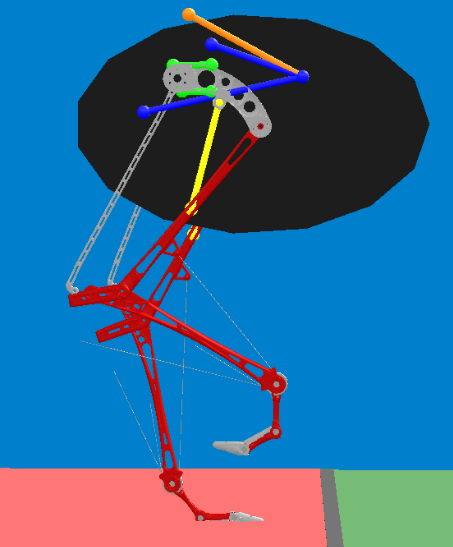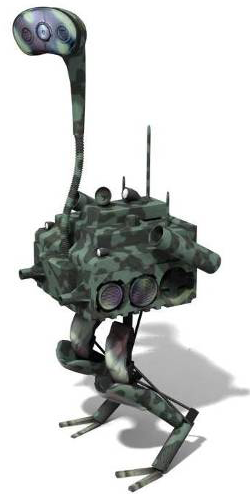Ostrich-inspired robot learns some fancy footwork
March 23, 2013
Meet FastRunner, a bioinspired robot that thinks it’s an ostrich, being built at the Florida Institute for Human and Machine Cognition. It’s expected to be the world’s fastest robotic biped, at 22 mph.
Impressive, but no Boston Dynamics Cheetah, at 28.3 mph (on a treadmill) — beating out Usain Bolt’s 27.79 mph.
But FastRunner may soon negotiate more complex environments — ones that Cheetah may fear to tread, thanks to research at MIT.
How to trip a robot
When an ambulatory robot, such as FastRunner, is moving one of its limbs through free space, its behavior is well-described by a few simple equations. But as soon as it strikes something solid — when a walking robot’s foot hits the ground, or a grasping robot’s hand touches an object — those equations break down.
Researchers at MIT’s Computer Science and Artificial Intelligence Laboratory are hoping to change all that, with a new mathematical framework that could lead to more efficient controllers for a wide range of robotic tasks.
Ordinarily, says MIT professor of associate professor of computer science and engineering Russ Tedrake, a roboticist trying to develop a controller for a bipedal robot would assume that the robot’s foot makes contact with the ground in some prescribed way: say, the heel strikes first; then the forefoot strikes; then the heel lifts.
“That doesn’t work for Fast Runner, because there’s a compliant foot that could hit at any number of points, there’s joint limits in the leg, there’s all kinds of complexity,” Tedrake says.
“If you look at all the possible contact configurations the robot could be in, there’s 4 million of them. And you can’t possibly analyze them all independently.”

Each leg of the bipedal FastRunner robot has 5 degrees of freedom and multiple passive springs and tendons. The legs are driven at the hip to keep the leg mass as low as possible. (Credit: Florida Institute for Human and Machine Cognition)
The mathematics of agility
To prove the stability of a control system for a robot that’s colliding with the world, then, it’s necessary to evaluate not only every possible configuration of the point of the contact, but also every possible solution of the resulting equations. That’s exactly what Tedrake and his associates did.
The key to their approach is to describe opposed possibilities for the state of a robotic system using simple algebraic expressions. For instance, as the foot of a bipedal robot approaches the ground, either the force exerted by the ground — call it F — or the distance to the ground — call it d — is equal to zero.
So the equation Fd = 0 holds whether the robot’s foot is moving through free space or touching the ground. Just a few such equations give the researchers enough mathematical purchase on the problem of collision that they can draw boundaries around the whole space of solutions.

FastRunner’s nominal gait can also be modified with explicit foot placement constraints. Here, the robot must significantly alter its stride length to bridge these gaps shown above. (Credit: Florida Institute for Human and Machine Cognition)
The result is not a precise description of how a robot will behave in any given instance, but enough to offer guarantees of stability. And maybe enough to help FastRunner negotiate even trickier landscapes than the ones shown in the video.
UPDATE 3/26/2013: First paragraph revised. FastRunner is being built at the Florida Institute for Human and Machine Cognition. It’s expected to be the world’s fastest robotic biped, at 22 mph. There have been no tests yet.
